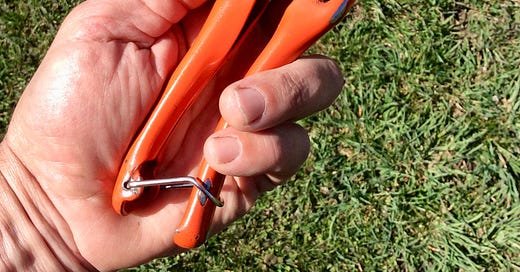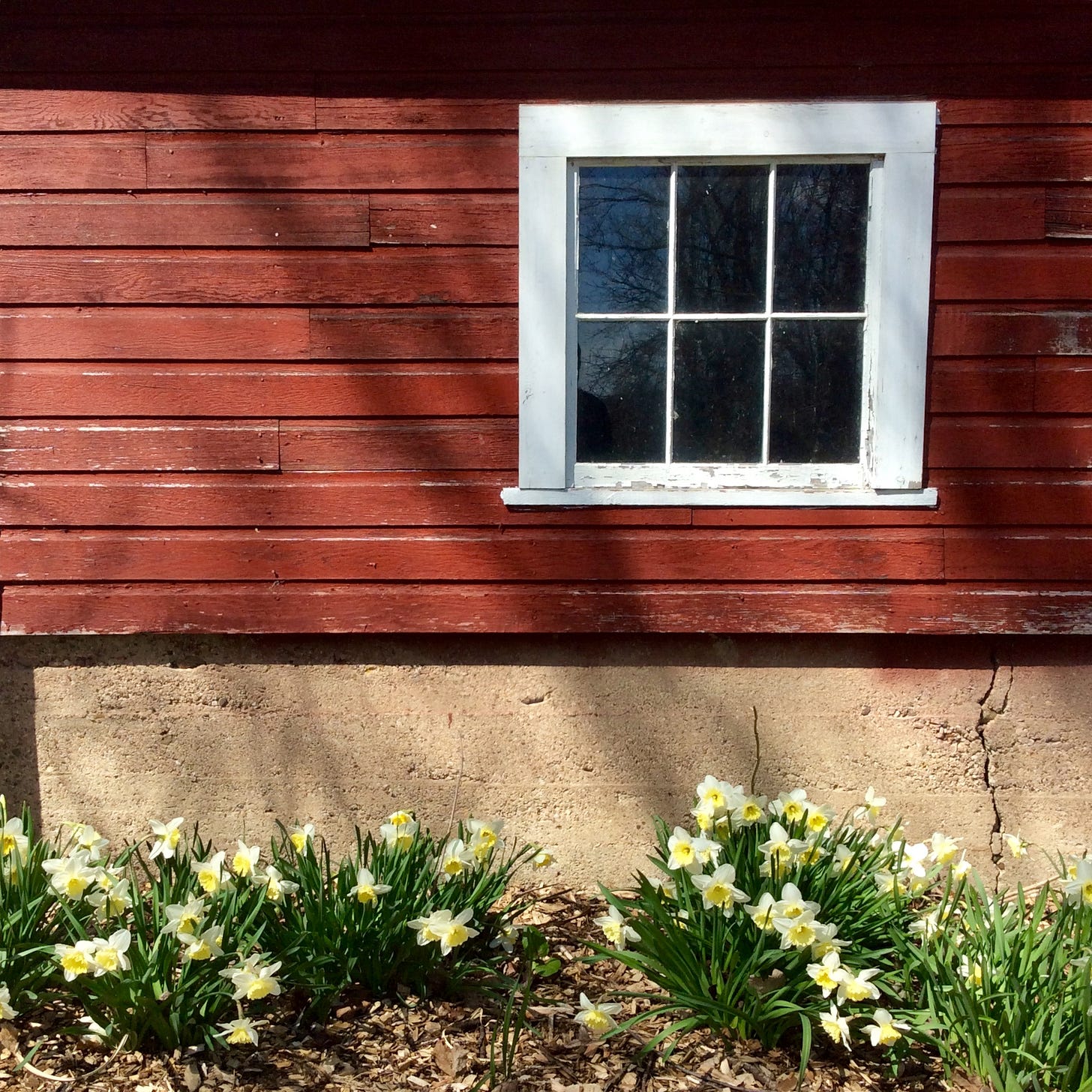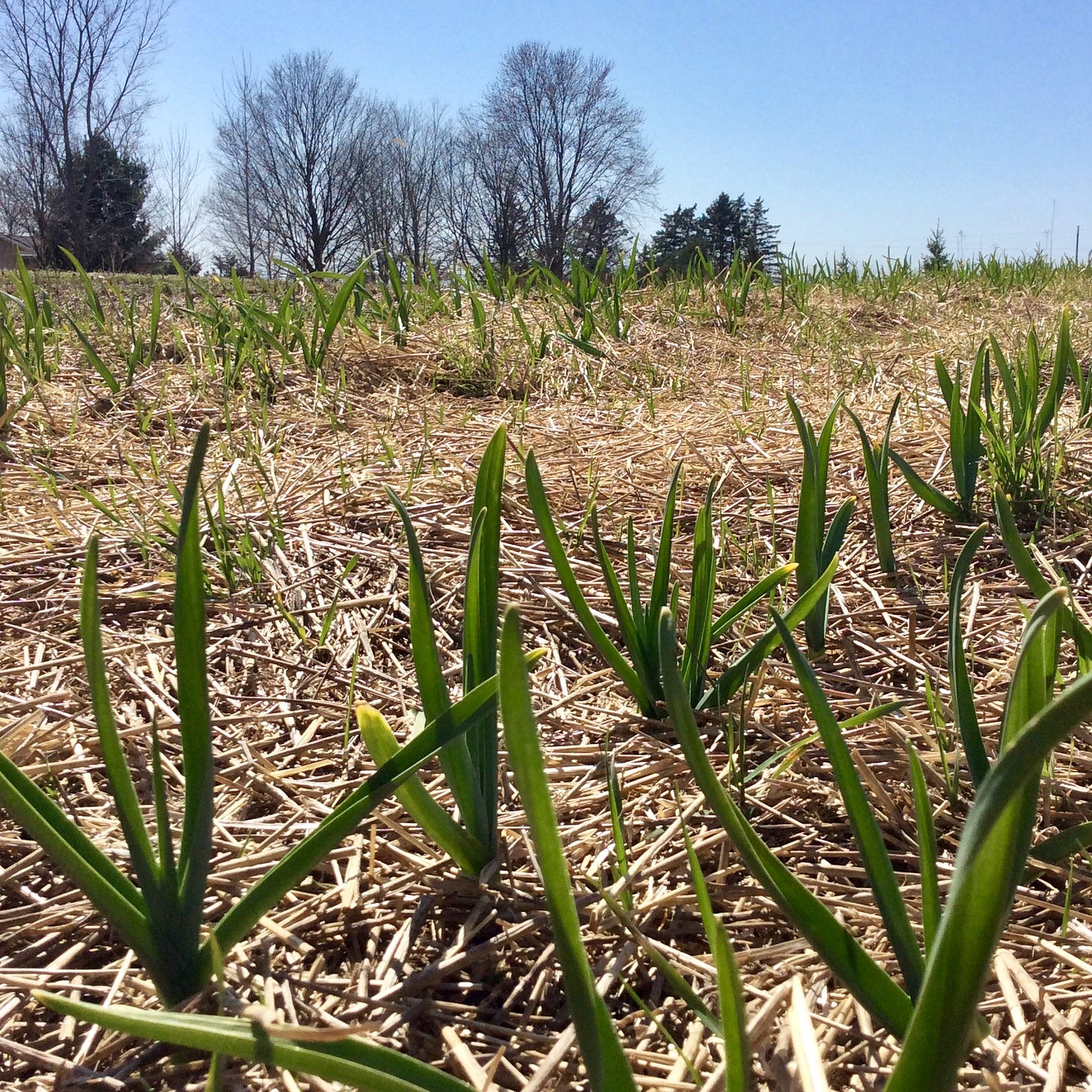Blackbird Farms News: April 2025
In which the farmer is baffled by the qualities of calmness and fruitfulness in regard to orchard trees.
The View from Here
March was pruning month here at the farm. Tree and shrub pruning typically should be done when those plants are dormant, which here in Michigan means any time between late fall and early spring. I tend not to do much pruning in November, because there are so many other tasks to complete in order to put the farm to bed for the winter. Plus, I am pretty tired when I get to the close of the season. So typically I push off my pruning to spring.
Still, pruning is necessary. And while certain of our ornamental trees and shrubs benefit from an occasional thinning—one big project this spring was rejuvenating an overgrown ninebark shrub—the biggest and most important pruning job is the orchard.
Because my farming apprenticeship focused on growing vegetables, I readily confess that, when it comes to fruit trees, I am out of my depth. Rank beginner, in fact, would be the best description of my skill set. Anything I happen to know, I know from books only. Sometimes these are helpful. Other times, less so. For example, one of my books intones that “a calm yet fruitful tree is the overarching goal of orchard pruning.” Okay, that’s lovely, but not the most helpful advice to a man standing among his fruit trees on a blustery March day with a pair of pruners in his hand.
At the end of the day, there is no other way to do a thing but to do it. One of my gardening heroes, Monty Don, when describing how to do some daunting task on his BBC program “Gardener’s World,” will often exhort his viewers to “Be brave.” So armed with that encouragement, I began.
The aim in pruning a fruit tree, as I understand it, is to maximize the amount of solar energy reaching the fruit. Achieving this means opening up the tree to light and airflow. The standard method is to establish up the trunk a succession of groupings of lateral branches, termed scaffolds. Each scaffold should comprise three to five branches and be spaced about three feet apart. Every other branch gets pruned off. Then, once this basic structure is established, you thin the growth on these lateral branches to open up the tree.
In theory, this sounds straightforward. In practice, it involves, for me, a great deal of walking around the tree and peering up into it, a fair bit of chin-scratching, more walking and peering, perhaps stepping away from the orchard and doing something else for a while to let my thoughts percolate. And then, eventually, at long last, the initial cuts. It’s nerve wracking at first, but I remember to be brave and carry on. Once I have committed to those first cuts, the job becomes a little easier, and soon enough becomes fairly obvious.
Maybe with a few more springs of pruning I can graduate from rank beginner to not-entirely-hopeless amateur. In any event, I am not sure the trees care how expertly they are pruned, so long as they are pruned. I hope so, at least. In the meantime, there will be fruit to harvest and enjoy.
Notes from the Field
Spring has well and truly arrived here at the farm. The sugar maples are budding out, and the crocuses and snowdrops have bloomed, while the daffodils are just starting to. Out in the field, both the garlic’s green shoots and the rhubarb’s broad leaves are peeking through the straw mulch.
Farm work has now begun in earnest. I’ve been in the greenhouse since mid-March, seeding for our spring plant sale and for the crops we will be growing for our on-farm markets. We once again tapped our black walnut trees, and while it seems not to have been a banner year for sap production, I think our efforts will yield at least a little of that precious black walnut syrup. And the fields are drying out nicely, which means soon enough it will be time to begin my spring plowing and the planting out of the first vegetables.
2025 Plant Sale
If you or someone you know is eager to do a little gardening this season, keep in mind that we will once again be selling herb and vegetable starts this spring. Our herb and vegetable plant pre-sale continues through the first week of May, with order pick-ups happening in Grand Rapids on May 14, here at the farm on May 17, and at the Sweetwater Local Foods Market on May 24. (See the order form for specifics.) To place an order, please complete our online order form. (For those more inclined to procrastinate on such things, never fear: We will still be offering plants at our on-farm sale on Saturday, May 17, from 9:00 am to 1:00 pm.)
News and Notes
• We’ll be ramping up our flower production this year and growing all manner of beautiful blooms. Our current plan is to open up the flower patch to the public for bouquet nights on Mondays and Wednesdays (5:30 pm to dusk) starting on July 14 and running through the beginning of October. We will also be booking private bouquet gatherings—perfect for birthday parties, bridal showers, church groups, and more!—on the weekends, and are also working out options for wedding and event flowers. Reach out to Shel at hello.blackbirdfarms@gmail.com if you’re interested in learning more.
• Mark your calendars for this season’s Second Saturday on-farm markets, where we’ll be selling veggies, flowers, and fruit, and will likely have some you-pick options as well. Our first Second Saturday market is set for June 14, 9:00 am to 1:00 pm, and is open to the public. Hope you can join us!
Recipe of the Month
This time of year, our root cellar begins to look a little barren, but we still have some carrots, potatoes, and onions, which coupled with some pantry staples makes one of our favorite dishes, cottage pie. (Think shepherd’s pie, but with ground beef instead of lamb.) Enjoy!
Recommended Reading
Glory be, gardening season is upon us! Happily, our gardens can be not only a delight to us but also an asset to the environment. This interview with Douglas Tallamy, co-founder of the Homegrown National Park non-profit, summarizes simple ways to do so. As he explains,
Every landscape needs to manage the watershed in which it lies. Every landscape needs to support pollinators. Every landscape needs to support a viable food web. And every landscape needs to sequester carbon.
Be sure to check out his plant lists for keystone species that maximize beneficial ecological impact on the environment.
Spread the Word
Know someone who would enjoy this newsletter? Feel free to pass along our subscription information. Thanks!






